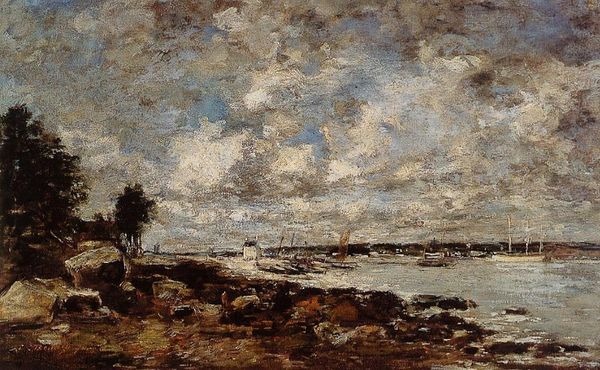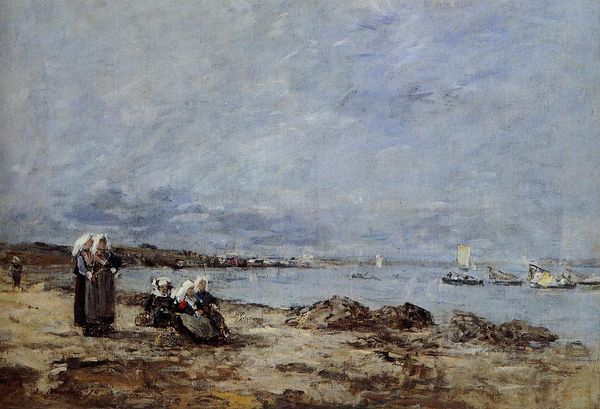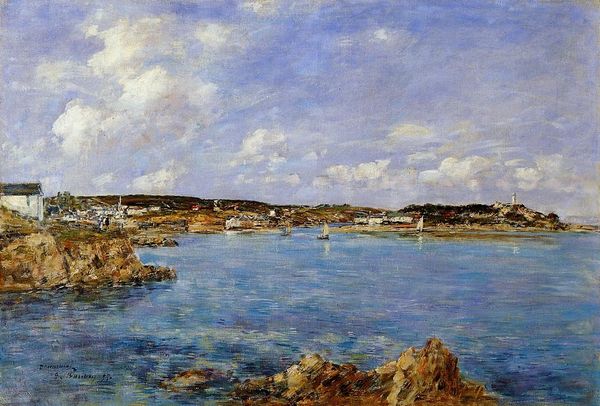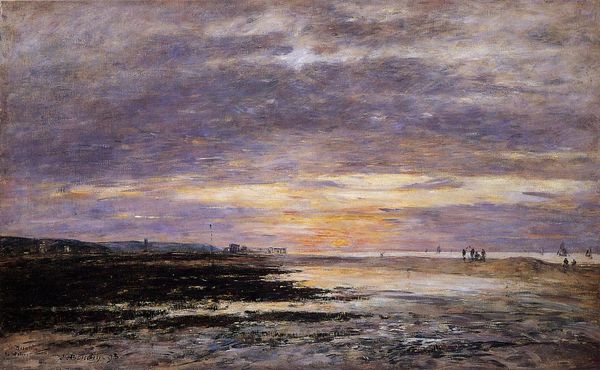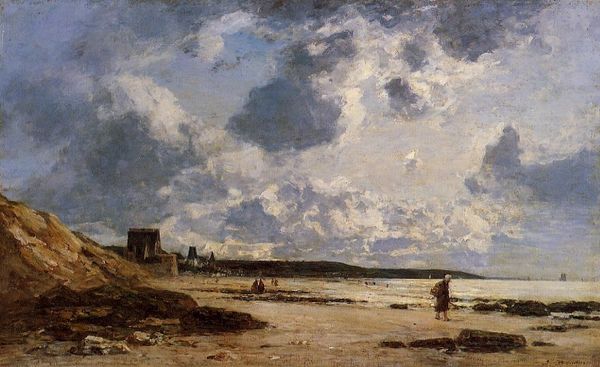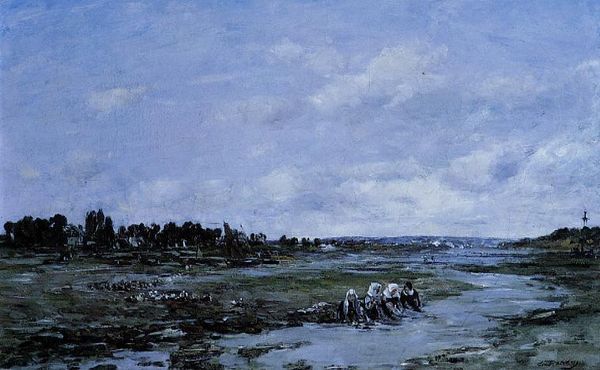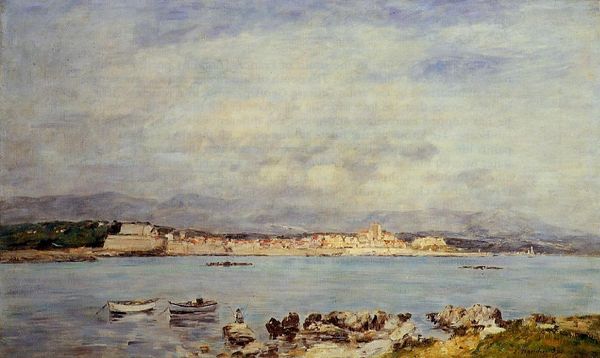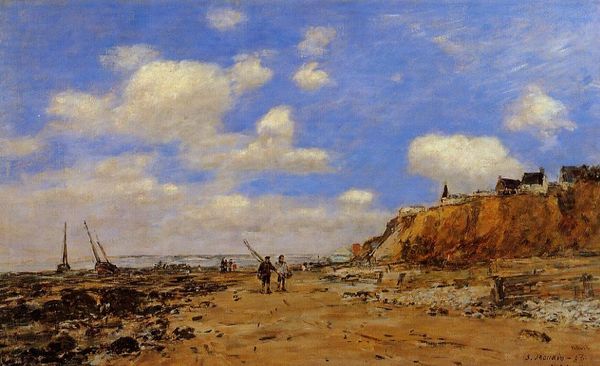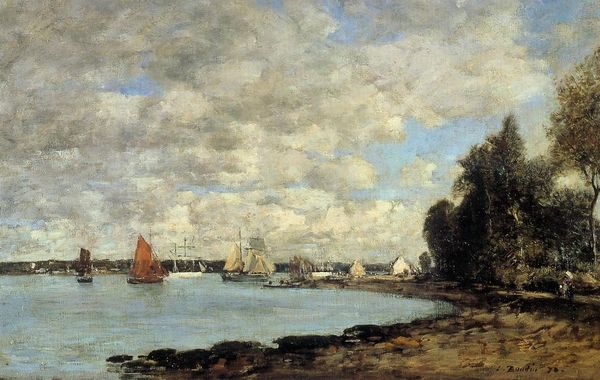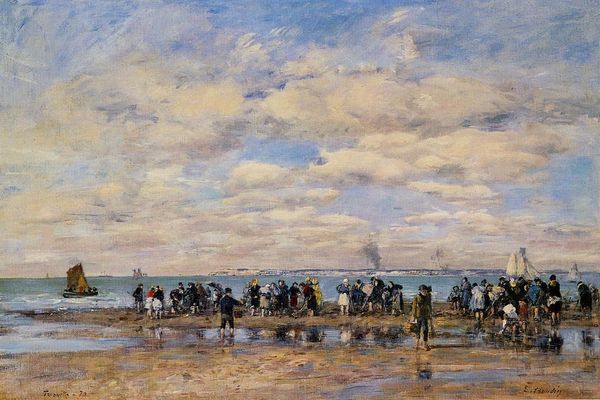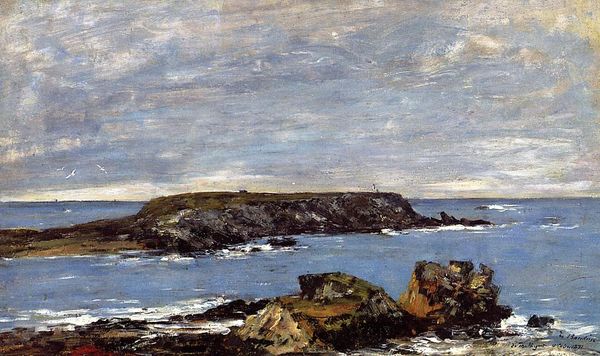
Copyright: Public domain
Curator: Welcome. Today, we're considering Eugène Boudin's "Women Fishing for Shrimp at Kerhor," an oil on canvas from 1870, currently held in a private collection. Editor: Right. My first impression is pure atmosphere. It’s muted, almost monochromatic, but those swirling clouds steal the show. They give the scene a real sense of movement and transience, like a fleeting moment captured perfectly. Curator: Indeed. Boudin masterfully utilizes the atmospheric perspective to create depth. Notice the subtle gradations in tone and the way the sky seems to meld into the water, blurring the horizon line. Semiotically speaking, the sky functions as a dominant signifier here. Editor: Signifier, yes, but it *feels* like melancholy to me. The way the figures are silhouetted, almost anonymous. There’s a certain solitude about them, even though they’re together. They're wading into the water, their forms softened in a way that is also kind of dreamy. Curator: The composition also echoes the Romantic tradition, prioritizing subjective experience of landscape, although filtered through an Impressionistic lens in the application of paint. Consider how the brushstrokes are broken, capturing light and shadow in a way that presages later developments. Editor: And there's a kind of quiet dignity in the subject matter, right? These women, doing this very traditional work. Boudin doesn't romanticize it; he simply presents it. Which I really appreciate. No posed, pretty scenes here, but real, everyday labor. It’s pretty awesome. Curator: I concur, even though the work's visual rhetoric eschews grandiosity and symbolism. Yet it operates as an implicit commentary on social and economic life, seen through the lens of aesthetic experience. Editor: Well, I see more than just aesthetic choices. For me, it speaks of human connection and continuity. But you are right to talk about the surface treatment and artistic forethought. Anyway, what do you think someone fifty years from now might notice when looking at this work? Curator: Possibly the tension between its representational elements and abstract qualities as modes for communicating collective narratives about the sea and those that depended on its provision. It might well speak across time more persuasively than we think.
Comments
No comments
Be the first to comment and join the conversation on the ultimate creative platform.

